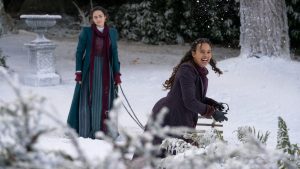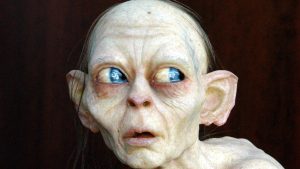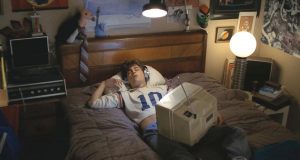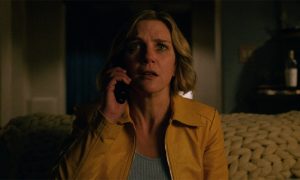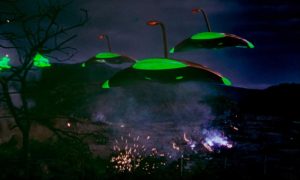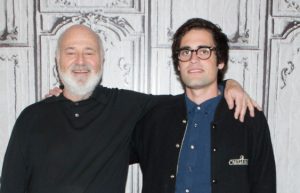
This article contains spoilers for Barbie.
When Stereotypical Barbie (Margot Robbie) initially wakes up in her perfect pink world, Barbieland looks like a genuine utopia. At first glance, everyone seems happy with their place in this matriarchal society. Within Greta Gerwig’s Barbie, Women hold positions of status and power and constantly support each other. There’s no war or conflict (aside from the Kens trying to get Barbie’s attention). But even with all the progress that Barbieland seems to have made as a fictional society, there doesn’t seem to be much room for queerness within this hyper-stylized, feminine world.
Queerness as a concept extends beyond a person’s sexuality. Without getting too deep into queer theory, queerness essentially refers to anything that falls outside of the hegemonic or dominant societal norm. In the real world, this “norm” is the straight, white male. They are the ones who have consistently held the power to shape society. In Barbieland, however, this “norm” is Barbie herself.
Even though Barbieland appears to be more accepting and progressive than the real world, it’s still hard for characters that aren’t traditional Barbies or Kens to find their place. Barbieland’s matriarchy is still tinged with patriarchal influences because it represents what Mattel (or at least this fictionalized version of the company) thinks a woman-led society looks like. Because of this, the gender binary that the Real World is beholden to still affects Barbieland, just in a different way. Barbies are the leaders of society, at least those that conform to what a Barbie is “supposed” to be. Kens are there to lift up their Barbies, and not much else.
This leaves characters like Weird Barbie (Kate McKinnon), Allan (Michael Cera), and even Midge (Emerald Fennell) to an extent, on the periphery of this society. Allan and Weird Barbie are queer-coded not because of any explicit relationships or attraction to other characters, but because neither of them fit in with their assigned gender roles.
Allan may have been advertised as Ken’s best friend, but he doesn’t quite fit in with them and their need to constantly capture Barbie’s attention, nor does he side with them during Barbieland’s brief experience with horse-based patriarchy. He teams up with the Barbies during their revolution against the Kens, but he doesn’t really fit in there either. As Barbieland tries to move forward from the attempted Kendom coup in the third act of the movie, it’s still not clear what Allan’s role is now. Weird Barbie is at least offered a role in President Barbie’s (Issa Rae) cabinet, but Allan is not. Nor is he offered one of the Kens’ lower circuit court judge positions. Allan is once again left on the periphery without a place in this society.
Weird Barbie also doesn’t look or act like the other Barbies, and possesses a knowledge of the outside world and how it works that most others don’t seem particularly interested in. Because her looks and behavior don’t fall in line with the other Barbies, she’s been relegated to a house on the edge of town where she stays until a regular Barbie “malfunctions” and comes to her for help.
It isn’t until Stereotypical Barbie begins to question her existence that Weird Barbie and Allan really get a chance to find a purpose in this world. At first, Stereotypical Barbie just wants to go back to how her life was before. When given the symbolic option between a feminine high heel and a Birkenstock by Weird Barbie, she chooses the high heel without hesitation. It’s only then that Weird Barbie reveals that Barbie doesn’t really have a choice, and must go to the real world to find herself.
Birkenstocks aren’t just a symbol of comfort and freedom from the hyperfemininity that high heels typically represent, they are also a shoe with a long history of ties to early feminism and lesbian movements. The fact that Weird Barbie produces this shoe to represent learning about the world beyond Barbieland’s gender binary is no coincidence. Like Weird Barbie, the Birkenstock doesn’t fit in with the beauty standards or gender conventions of this world. By Barbieland’s standards, both would be considered queer.
Stereotypical Barbie’s journey is thus in and of itself a queer one. Once she accepts Weird Barbie’s symbolic Birkenstock, she effectively stops fitting into the ideals of Barbieland and, for a time, she also doesn’t quite fit into the Real World either. In both places, she’s seen as different and othered, and isn’t quite sure which is the better option. Even though she helps the Barbies reclaim Barbieland from the Kens, she realizes that her new understanding of herself and the world doesn’t fit here anymore either. She doesn’t want to just be another Barbie to a Ken. She wants to be her own person and live in the Real World that lets her be her unique self (at least more so than Barbieland seems to).
Barbie does an incredible job of telling a story about gender roles and the pitfalls that come from leaning too heavily in one direction or another. But at the same time, it feels like the queer-coded characters don’t really have a voice there. Even though characters like Weird Barbie and Allan were instrumental in saving Barbieland, it’s hard to ignore the fact that they didn’t have a place before the Kens’ attempted coup, and in Allan’s case don’t really have a place after.
Though Stereotypically Barbie does go through a queer awakening of sorts, she still has to be dragged into the resistance by Weird Barbie, who once again finds herself on the periphery during the Ken patriarchy. Allan and Weird Barbie know what it’s like to be left out and ostracized for not conforming to the norm, but this is Stereotypical Barbie’s first real experience with this feeling.
As a queer woman, I resonate with Barbie’s journey of self-discovery and acceptance. But I also feel deeply for Weird Barbie and Allan who don’t quite get the same treatment. Obviously this is Barbie’s story, but I also know how it feels to be the odd one out in a group. To not feel entirely safe being your true self in your hometown. Queerness isn’t vilified in Barbieland the way it is in the Real World, but that doesn’t mean it’s fully accepted either.
By the end of Barbie, it’s hard to fully determine how much Barbieland has truly changed and embraced queerness. Sure Weird Barbie is now in charge of sanitation (her choice), but Allan’s future is still up in the air, and Barbie had to leave home in order to embrace her true self (as many queer youth do). It’s also unclear whether the other dolls that live with Weird Barbie like Sugar Daddy Ken and Magic Earring Ken will also be allowed to be a part of society again, or if they’ll still be stuck on the periphery. Hopefully the revolution has changed Barbieland for the better for the strange and different dolls, but it’s a shame that it took Ken’s (Ryan Gosling) horse obsession for change to begin.
The post Barbie Asks If There Is Room for Queerness in Barbieland appeared first on Den of Geek.

